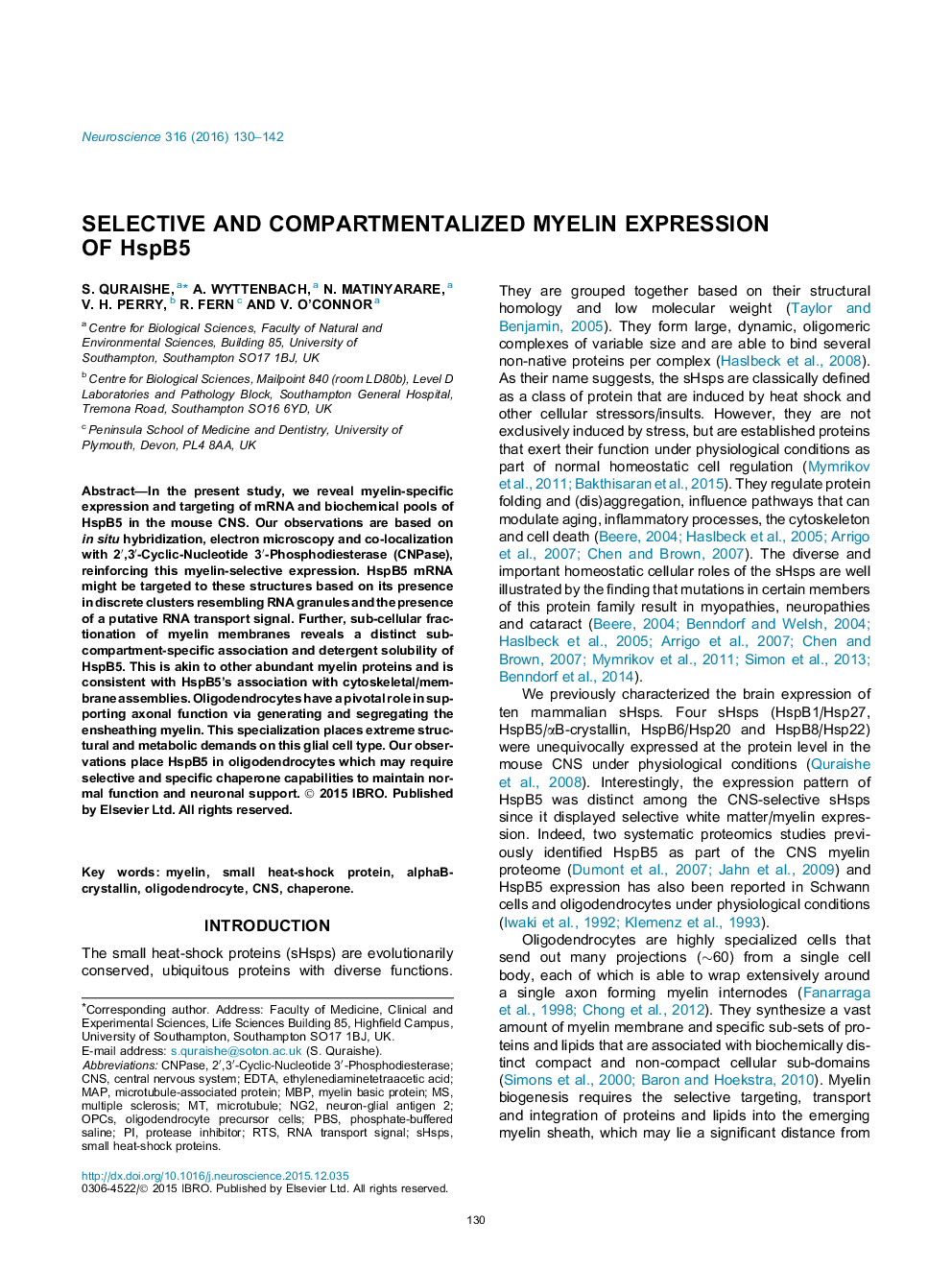| Article ID | Journal | Published Year | Pages | File Type |
|---|---|---|---|---|
| 6271415 | Neuroscience | 2016 | 13 Pages |
â¢HspB5 exhibits abundant and selective expression in oligodendrocytes.â¢Its mRNA and protein define sub-compartment organization within non-compact myelin.â¢HspB5 chaperone function may provide an important functionality in oligodendrocytes.
In the present study, we reveal myelin-specific expression and targeting of mRNA and biochemical pools of HspB5 in the mouse CNS. Our observations are based on in situ hybridization, electron microscopy and co-localization with 2â²,3â²-Cyclic-Nucleotide 3â²-Phosphodiesterase (CNPase), reinforcing this myelin-selective expression. HspB5 mRNA might be targeted to these structures based on its presence in discrete clusters resembling RNA granules and the presence of a putative RNA transport signal. Further, sub-cellular fractionation of myelin membranes reveals a distinct sub-compartment-specific association and detergent solubility of HspB5. This is akin to other abundant myelin proteins and is consistent with HspB5's association with cytoskeletal/membrane assemblies. Oligodendrocytes have a pivotal role in supporting axonal function via generating and segregating the ensheathing myelin. This specialization places extreme structural and metabolic demands on this glial cell type. Our observations place HspB5 in oligodendrocytes which may require selective and specific chaperone capabilities to maintain normal function and neuronal support.
Graphical abstractDownload high-res image (97KB)Download full-size image
